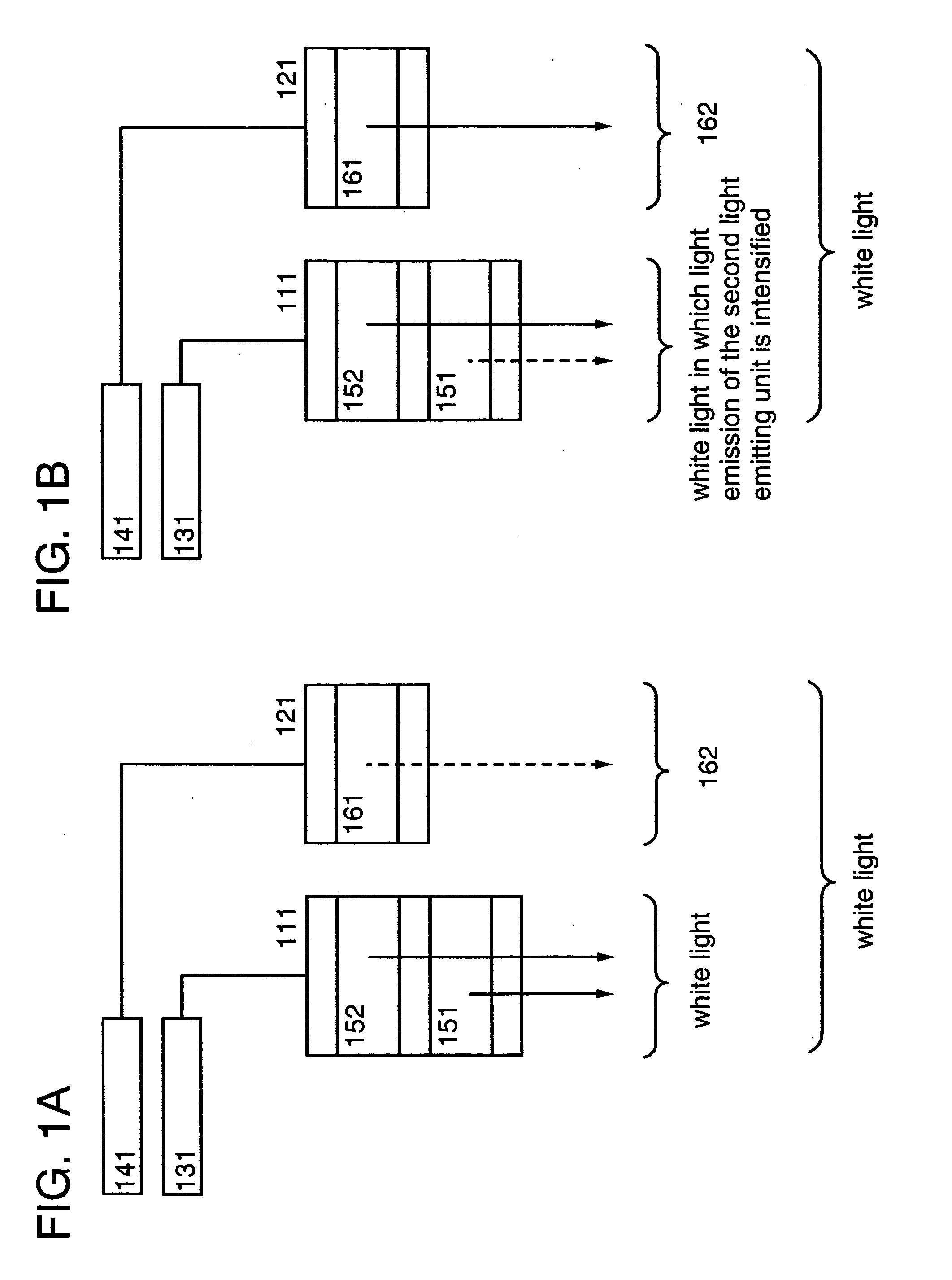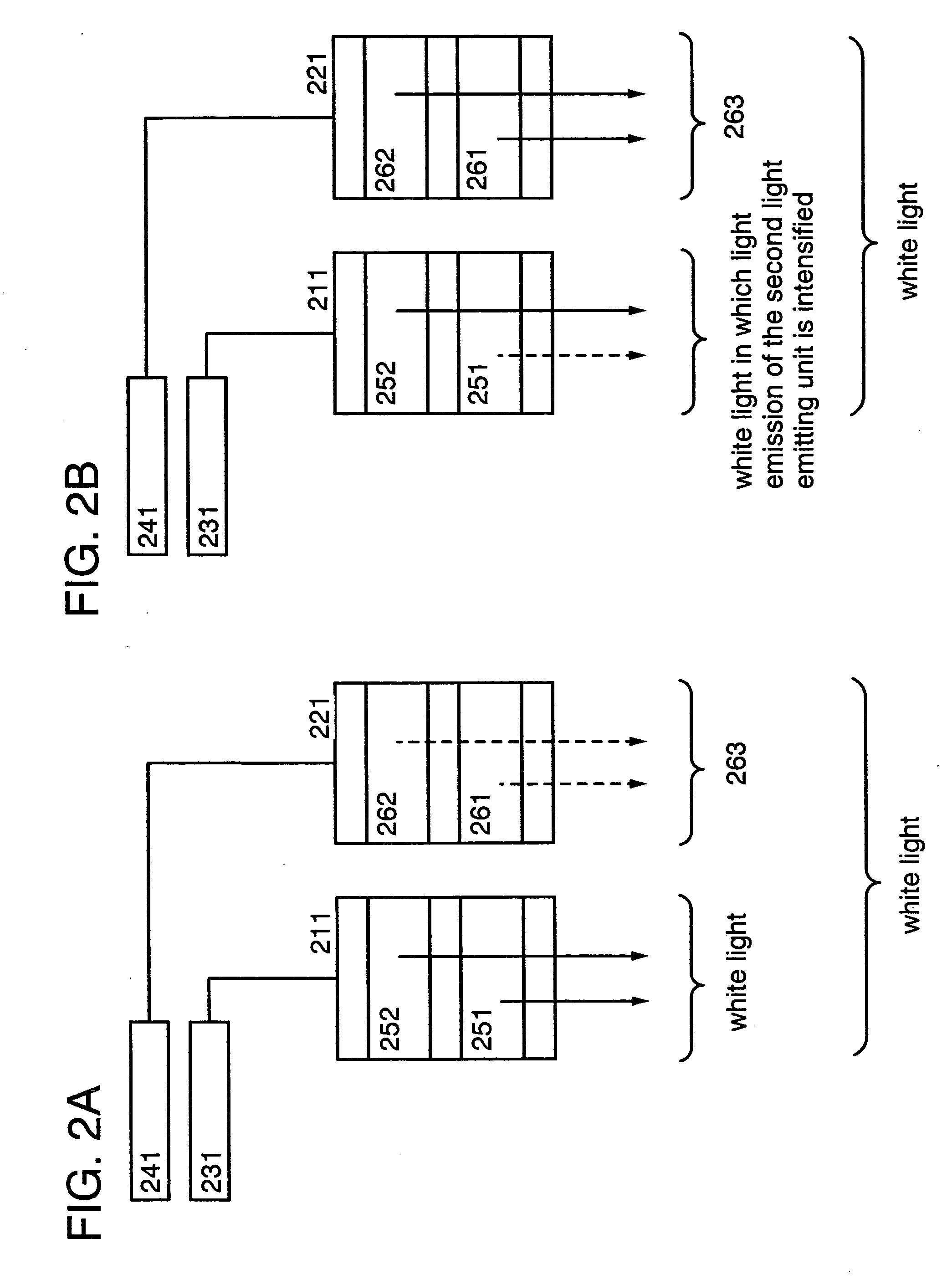Lighting system
a light-emitting system and light-emitting technology, applied in the direction of static indicating devices, instruments, semiconductor lamp usage, etc., can solve the problems of color shift and color shift cannot be solved, and achieve the effect of low emission color change and high luminan
- Summary
- Abstract
- Description
- Claims
- Application Information
AI Technical Summary
Benefits of technology
Problems solved by technology
Method used
Image
Examples
embodiment mode 1
(Embodiment Mode 1)
[0038] This embodiment mode explains one mode of a lighting system of the present invention.
[0039] As for the lighting system of the present invention, a light emitting region is divided into a plurality of regions, and each of the divided light emitting regions includes a plurality of light emitting elements. One is a stacked light emitting element in which a plurality of light emitting units is stacked, and another is a correction light emitting element. The stacked light emitting element is referred to as a first light emitting element, and the correction light emitting element is referred to as a second light emitting element.
[0040] The first light emitting element is formed by stacking a plurality of light emitting units so as to provide a desired emission color as a whole. In other words, the first light emitting element is formed so that an initial emission color is a desired first emission color. For example, in the case of a light emitting element in wh...
embodiment mode 2
(Embodiment Mode 2)
[0045] This embodiment mode explains a stacked light emitting element used for a lighting system of the present invention with reference to FIG. 5. The stacked light emitting element has a structure in which a plurality of light emitting units is stacked with a charge generation layer interposed therebetween. FIG. 5 shows a structure in which two light emitting units are stacked as one mode of the stacked light emitting element. In addition, this embodiment mode explains the case where a first electrode 501 functions as an anode and a second electrode 502 functions as a cathode.
[0046] A substrate 500 is used as a support for the light emitting element. For the substrate 500, for example, glass, plastic, or the like can be used. Note that another material may alternatively be used as long as it functions as a support in a manufacturing process.
[0047] For the anode, various materials can be used, and metal, an alloy, a conductive compound, a mixture thereof, or th...
embodiment mode 3
(Embodiment Mode 3)
[0061] This embodiment mode explains a lighting system which uses a stacked light emitting element including two light emitting units as a first light emitting element and a light emitting element including one light emitting unit as a second light emitting element, with reference to FIGS. 1A and 1B. Although this embodiment mode explains the case where a divided light emitting region emits white light, the present invention can be applied to a case other than the case of white light emission.
[0062] In this embodiment mode, a first light emitting element 111 is a stacked light emitting element including two light emitting units. A first light emitting unit 151 and a second light emitting unit 152 contain different light emitting materials and emit light of different colors. For example, white light emission can be achieved by forming the first light emitting unit 151 to emit blue light and the second light emitting unit 152 to emit orange light and optimizing thi...
PUM
 Login to View More
Login to View More Abstract
Description
Claims
Application Information
 Login to View More
Login to View More - R&D
- Intellectual Property
- Life Sciences
- Materials
- Tech Scout
- Unparalleled Data Quality
- Higher Quality Content
- 60% Fewer Hallucinations
Browse by: Latest US Patents, China's latest patents, Technical Efficacy Thesaurus, Application Domain, Technology Topic, Popular Technical Reports.
© 2025 PatSnap. All rights reserved.Legal|Privacy policy|Modern Slavery Act Transparency Statement|Sitemap|About US| Contact US: help@patsnap.com



